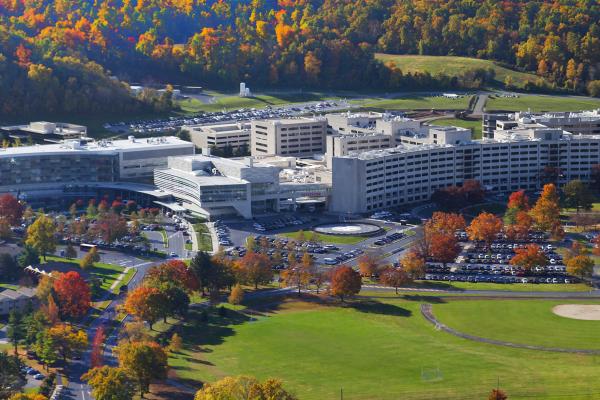Upper Extremity Broken Bones
If too much pressure is put on a bone, it will split, crack or break. A broken bone is also called a fracture. Fractures that occur in one of the many bones in your elbow, forearm, wrist and hand are called upper extremity fractures.
There are several types of fractures that affect the elbow, forearm, wrist and hand, including:
- A closed fracture occurs when the bone breaks but does not puncture your skin.
- An open or compound fracture occurs when the bone punctures your skin.
- A displaced fracture occurs when the bones break apart and are no longer straight.
- A non-displaced fracture occurs when the bone breaks in one spot and remains straight.
- A stress fracture occurs when repeated or prolonged force cause a hairline crack in the bone.
Fractures in the elbow, forearm, wrist and hand are often caused by falling, sports injuries or car accidents. Some medical conditions, like low bone density or osteoporosis, may also lead to weakened bones that are prone to cracks and breakage.
Symptoms, Diagnosis and Outlook
Symptoms
Symptoms of fractures in your elbow, forearm, wrist and hand include:
- Limb, joint or bone that is visibly misshapen and out of place
- Swelling, bleeding or bruising in the affected area
- Intense pain
- Tingling and numbness
- Broken skin with visible bone protruding
- Limited mobility or inability to move
- Loss of feeling or strength
Diagnosis
Fractures are diagnosed with a physical examination and X-rays to view the condition of the bone. Advanced imaging using CT scans and MRI may also be used to diagnose the severity and placement of the fracture.
Outcome
Your bones have a remarkable ability to mend, but it may take time. Your activities may be limited while the bones in your elbow, forearm, wrist or hand heal. Therapy may be required to help restore full function.
Experts in Care
Meet our doctors, view their profiles and select the one that’s right for you.
Find a doctor near youWhy Choose Penn State Health for Care
Top-Ranked by U.S. News & World Report
Penn State Health includes the Milton S. Hershey Medical Center, ranked as one of the best orthopedic providers in the country by U.S. News & World Report. This honor was earned because our doctors consistently deliver exceptional patient care and outcomes through their commitment to advanced treatments, translational research and provider training.
Coordinated, Specialized Care Through a Dedicated Institute
Our orthopaedic specialists work together through our dedicated Penn State Bone and Joint Institute. There, they focus on providing you with multidisciplinary, tailored care and state-of-the-art treatments and technologies. This produces the highest-quality patient outcomes. All physicians at the institute are fellowship-trained and subspecialize in additional niche areas of orthopaedics, including arthritis care and joint arthroplasty (joint replacement surgery).
Designated as a Blue Distinction® Center
Penn State Bone and Joint Institute is a Blue Distinction Center for Knee and Hip Replacement. This superior designation from BlueCross BlueShield is only given to health care facilities and providers that stand out for their expertise in delivering specialty knee and hip replacement care. Our surgeons specialize in a range of pain-relieving procedures, including partial knee replacement, total joint arthroplasty, joint preservation surgery and complex revision surgery. They perform more than 1,000 joint replacement procedures every year.
Confidence in Treatment Through Education
We developed a special joint replacement education website just for patients undergoing joint arthroplasty. The website takes you step by step through the joint replacement process. From things to consider before choosing surgery to recovery after surgery, you’ll find the information you need to help you feel confident in your decision to undergo joint replacement.
Advancing Orthopaedic Medicine Through Research
The doctors and researchers in our Center for Orthopaedic Research and Translational Science at the Milton S. Hershey Medical Center are committed to advancing our field through scientific discovery and education. As the only academic medical center in central Pennsylvania, Hershey Medical Center is a national leader in research, in partnership with Penn State College of Medicine, and on the leading edge of new treatment options, including clinical trials.
Support Groups
Support groups provide an opportunity to share your feelings and connect with other patients and caregivers who are experiencing similar struggles.
Convenient Locations
Find the care your family needs, close to home, at one of our many locations throughout central Pennsylvania.
Find a location near you



